Output 1.4: International Safeguards and Non-Proliferation
Contribution to the development and effective implementation of international safeguards and the nuclear non-proliferation regime.
Performance Measures
- Contribute to the strengthening of international safeguards in ways that advance Australia's interests.
- Contribute to policy development and diplomatic activity by the Department of Foreign Affairs and Trade (DFAT).
- Contribute to the IAEA's Standing Advisory Group on Safeguards Implementation (SAGSI).
- Manage the Australian Safeguards Support Program (ASSP).
- Cooperate with counterparts in other countries in the strengthening of international safeguards and improvement of domestic safeguards implementation.
- Provide advice and assistance to the Australian Intelligence Community in support of national and international non-proliferation efforts.
- Manage ASNO's international outreach program.
- Assess developments in nuclear technology.
Performance Assessment
Strengthening International Safeguards
ASNO continues its active role in international efforts in shaping and developing the effective implementation of nuclear safeguards, through engagement in a range of fora and projects. This includes working directly with the IAEA, as well as with other international fora, primarily through ASNO's membership of the Asia-Pacific Safeguards Network (APSN).
This engagement helps build and maintain specialist knowledge in ASNO on developments, emerging issues and trends in nuclear non-proliferation and how the IAEA verifies nuclear programs. This helps inform Australian Government policy on international security issues, and supports ASNO's monitoring and administration of the use of Australian uranium under Australia's many bilateral nuclear cooperation agreements. For example, ASNO continues its coordination of work on examining areas where Australia has technical capabilities that could potentially support an international verification effort in DPRK. This could draw on expertise in inspections and support areas within Australian Government agencies, as well as the specialised technical capabilities developed through the various Australian Safeguards Support Program (ASSP) projects. Developments in the range of IAEA approaches to different verification challenges can also change the regulatory impact on nuclear industrial and research activities in Australia. Maintaining specialist knowledge therefore also helps ensure changes in safeguards regulatory approaches can be managed with minimal disruption.
On broader aspects of safeguards implementation, ASNO's engagement included the IAEA Director General's Standing Advisory Group on Safeguards Implementation (SAGSI), technical meetings on IAEA safeguards projects, and various conferences and workshops. ASNO participated in the IAEA's Symposium on International Safeguards in November 2018 (held once every four years) presenting on aspects of safeguards implementation challenges and technology development projects. The breadth of Australia's contributions to this Symposium was greater than in previous Symposia. ASNO helped involve researchers from CSIRO and University of New South Wales (UNSW) to present on robotics and blockchain projects that may have applications for safeguards. In 2018, ASNO was also part of the Australian delegation to the IAEA General Conference meetings in September, contributing to the negotiation of the Safeguards Resolution (‘Strengthening the Effectiveness and Improving the Efficiency of Agency Safeguards') which was agreed by consensus.
Australian Safeguards Support Program
The Australian Safeguards Support Program (ASSP), coordinated by ASNO, is one of 21 programs established by member States and the European Commission to assist the IAEA in safeguards research and development. Australia has one of the longest-running programs, having been in place since 1980.
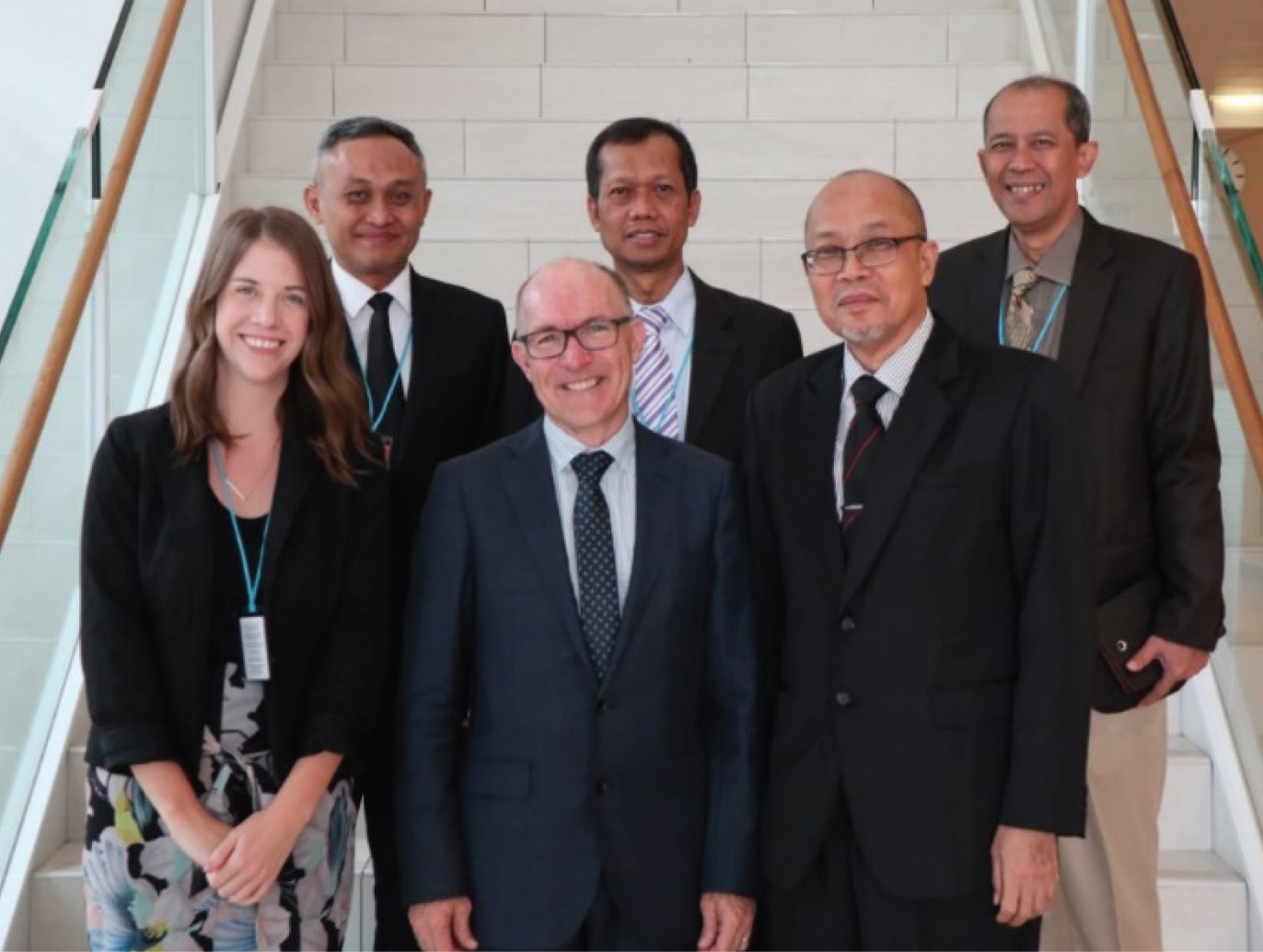
Meeting between DG ASNO and BAPETEN
Nuclear Inspection Robots and Other Emerging Technologies
In November 2017, CSIRO hosted the IAEA's Robotics Challenge, an event aimed at developing robotic systems to help inspectors perform repetitive inspection tasks more efficiently and consistently, particularly in areas of nuclear facilities that may be difficult to access (see ASNO's Annual Report 2017–18). ASNO and the IAEA prepared a report evaluating the robots based on the extent to which each one fulfilled the inspection scenarios during the challenge.
Some of the robots were designed to propel themselves autonomously across the surface of a spent fuel pond, while holding a device for measuring radiation glow patterns (known as Cherenkov glow) from spent nuclear fuel. Based on the outcomes of the challenge, the IAEA selected three of these ‘unmanned surface vehicles' for proof-of-concept testing in a spent fuel pond at the Loviisa Nuclear Power Plant in Finland in November 2018. In January 2019, the IAEA announced Datastart Ltd of Hungary the winner of the challenge. The IAEA is in discussions with Member States, nuclear facility operators and Datastart to further refine and test the design to ensure it is compliant with all applicable requirements and regulations.
Separate from the Robotics Challenge, ASNO, CSIRO and the IAEA are exploring how robotics can be developed further. CSIRO is developing robots for surveying radioactive material in drums in densely packed storage facilities. These robots may have safeguards applications, including building maps of storage facilities, identifying the locations of nuclear material, characterising that material, and verifying seals in otherwise inaccessible locations.
Researchers at the Faculty of Engineering, UNSW have developed a blockchain (shared ledger) platform to hold nuclear material accounting data that conforms to IAEA safeguards reporting requirements. Blockchain technology is designed to ensure the consistency and immutability of electronic data held among multiple parties, which may prove useful for reporting inventories and transactions among nuclear operators, state regulatory authorities and the IAEA.
The researchers performed a comparative evaluation of ASNO's existing centralised NUMBAT database and their blockchain platform, referred to as the Shared-Ledger nUclear Material Balance Tracking system (SLUMBAT), using data on hypothetical nuclear facilities. The blockchain platform offers potential advantages in terms of efficiency and data integrity. The Stimson Center, Finland's nuclear regulator (STUK) and UNSW are starting a project to develop a more detailed blockchain-based nuclear accountancy prototype based on Finland's safeguards system with a focus on accountancy for Finland's deep geological spent fuel repository.
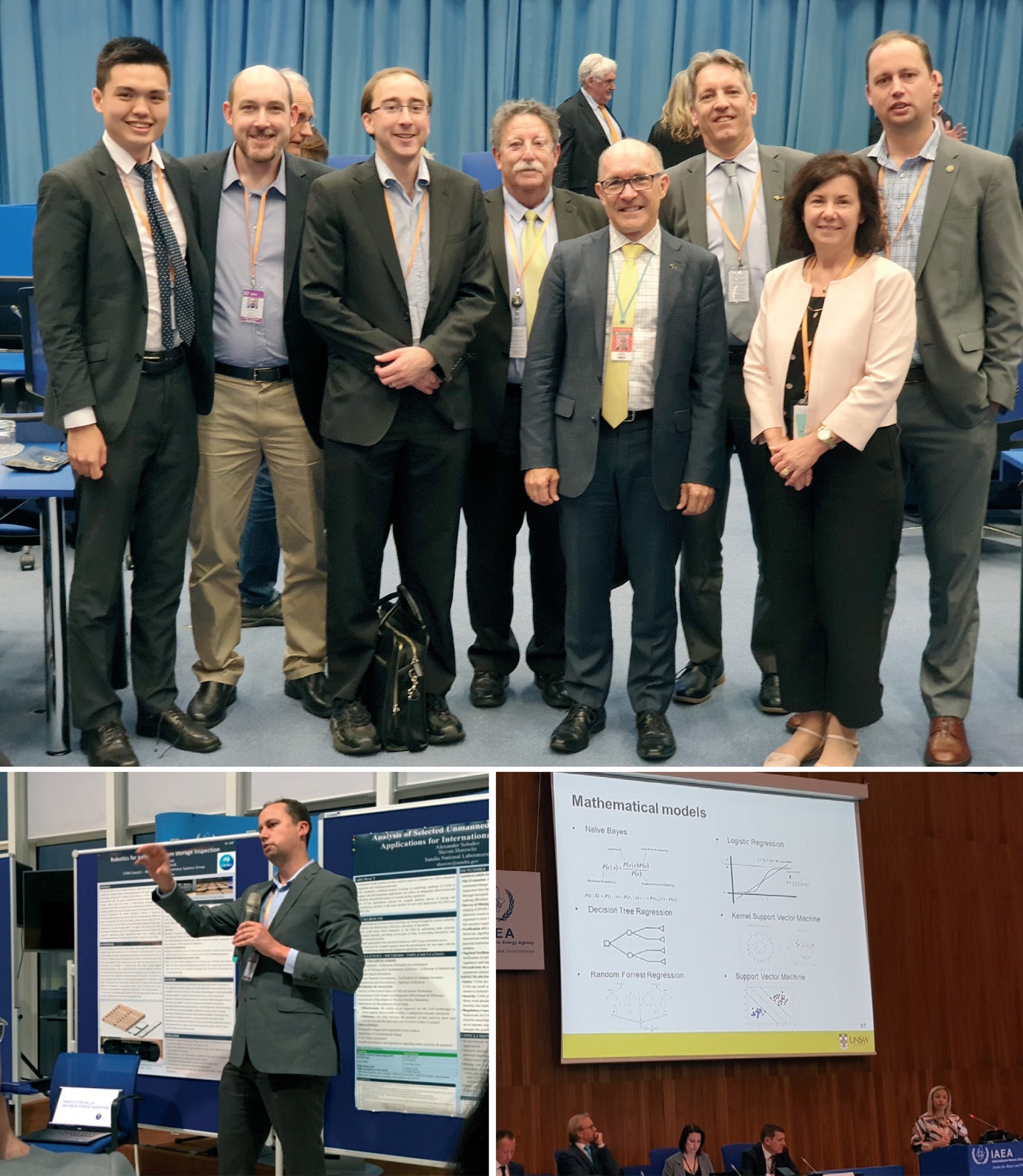
Symposium on International Safeguards at the IAEA in Vienna in November 2018: (a) ASNO officers and other participants from Australia at the Symposium, (b) Paul Flick (Principal Research Engineer, CSIRO Data61) presenting on robots developed by CSIRO Data61 for inspection of radioactive material in drum storage facilities, (c) Master of Engineering Science (Nuclear Engineering) graduate Jasmin Diab presenting her research on natural language processing to enhance uranium mining safeguards.
Helping detect undeclared nuclear activities using mass spectrometers
ANSTO's Centre for Accelerator Science participates in the IAEA Department of Safeguards' Network of Analytical Laboratories (NWAL), providing bulk analysis of swipe samples. During 2018–19, extensive testing has established that ANSTO has successfully resolved an issue with a source of naturally occurring uranium background in the system that had required a temporary suspension of routine analyses of swipe samples. ANSTO participated in an inter-comparison exercise with other NWAL members, sponsored by the IAEA and the US Department of Energy. The results demonstrate excellent performance of ANSTO's Accelerator Mass Spectrometry system, with results comparable to other leading NWAL members. ANSTO expects to resume routine analysis of samples for NWAL during 2019–20.
The University of Western Australia's Centre for Microscopy, Characterisation and Analysis continues to support the NWAL. The Centre uses its large-geometry secondary ion mass spectrometer (LG-SIMS) for quantifying uranium enrichment in environmental samples for nuclear safeguards. Due to staff turnover, the Centre did not process any IAEA samples from in-field verification activities during 2018–19, but it will resume analytical services in mid–2019. The lab participated in an inter-comparison exercise with other SIMS in the NWAL, with results expected in late 2019.
Assessment of Proliferation Pathways
In 2017, the IAEA commenced its first systematic review of the Physical Model since the early 2000s. The Physical Model is the IAEA's set of documentation that details the technology, possible diversion paths and proliferation indicators for each step of the nuclear fuel cycle. The IAEA Department of Safeguards uses the Physical Model in planning for inspections and in headquarters analysis. ASNO is contributing to updating the volume of the Physical Model on uranium enrichment. In May 2019, a technical expert from ASNO participated in a consultancy meeting and advised the IAEA on emerging safeguards and fuel cycle technology issues in uranium enrichment. The technical expert also participated in a consultancy meeting in May 2019 to review an IAEA draft guidance document on performing technical assessments of states' capabilities to develop and deploy undeclared gas centrifuge enrichment plants.
Proliferation Analysis Training
Since 2009, Australia has provided annual proliferation analysis training to IAEA safeguards staff to enhance their ability to analyse complex proliferation issues. In the last twelve months, the Office of National Intelligence and the Australian Department of Defence provided two proliferation analysis workshops to the IAEA. The content of the workshop is regularly updated and participant feedback has confirmed that the training continues to meet the needs of the IAEA Department of Safeguards.
Other Safeguards Innovations
Open-source analysis increasingly complements the IAEA's traditional in-field verification work. The IAEA Content Reification Engine (ICORE) utilises machine learning and natural language processing to identify indications of potential undeclared nuclear fuel cycle activities. A student at UNSW has supported the IAEA capability in this area through a Master of Engineering Science (Nuclear Engineering) dissertation focussing on identifying discrete terms that can be used to differentiate literature on uranium mining processes from the processing of other minerals in open-source datasets. This project has provided the IAEA with a dataset of key sentences and phrases from literature to help train ICORE to automatically identify relevant publications related to this stage of the nuclear fuel cycle in very large datasets of open source publications.
ASNO is currently considering additional projects that can provide the IAEA with training text for other stages of the nuclear fuel cycle.
ASNO is also participating in the Maker Games at UNSW. In consultation with the IAEA, ASNO challenged a team of UNSW Engineering students to design an ergonomic clipboard to help nuclear safeguards inspectors take notes, securely store paper documents, and carry out measurements during inspections at nuclear facilities. Between June and August 2019, the team is developing a modular, wearable clipboard that will hold various equipment regularly used by inspectors while improving on the ergonomics of the conventional pen-and-paper solution and adhering to safety and security requirements applicable to nuclear facilities.
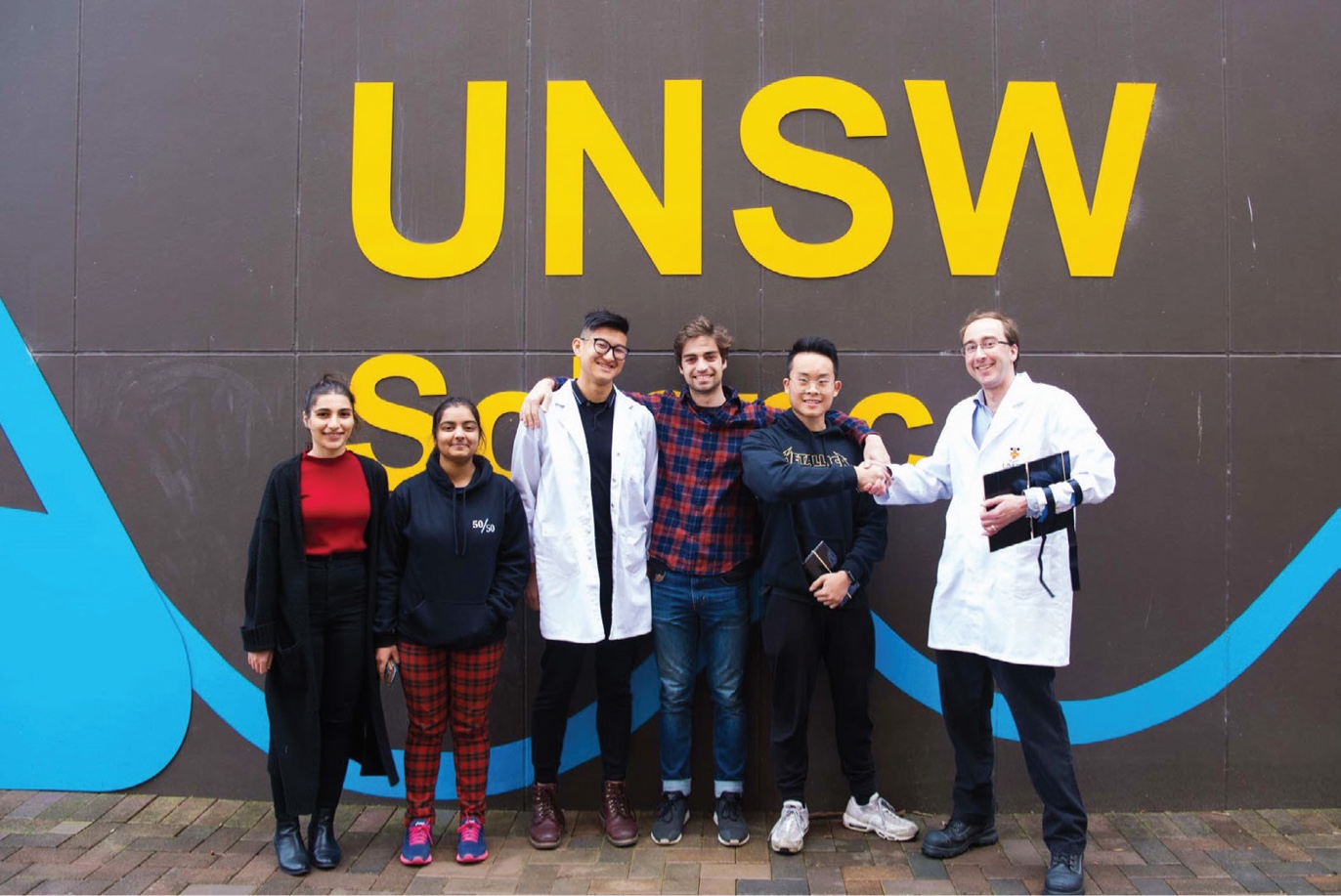
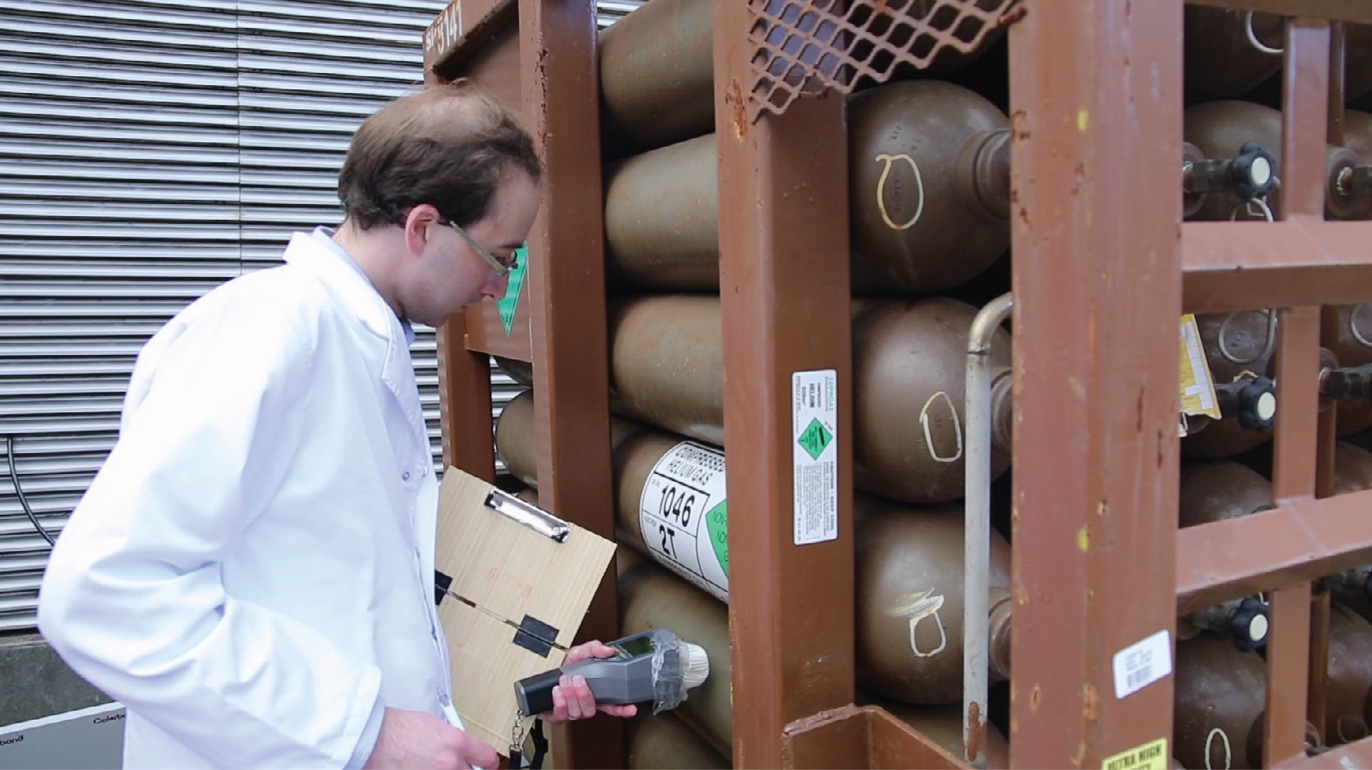
(a) The team of UNSW students and an ASNO safeguards officer participating in Maker Games, and (b) a simulated safeguards inspection activity at UNSW with an early prototype of the wearable clipboard.
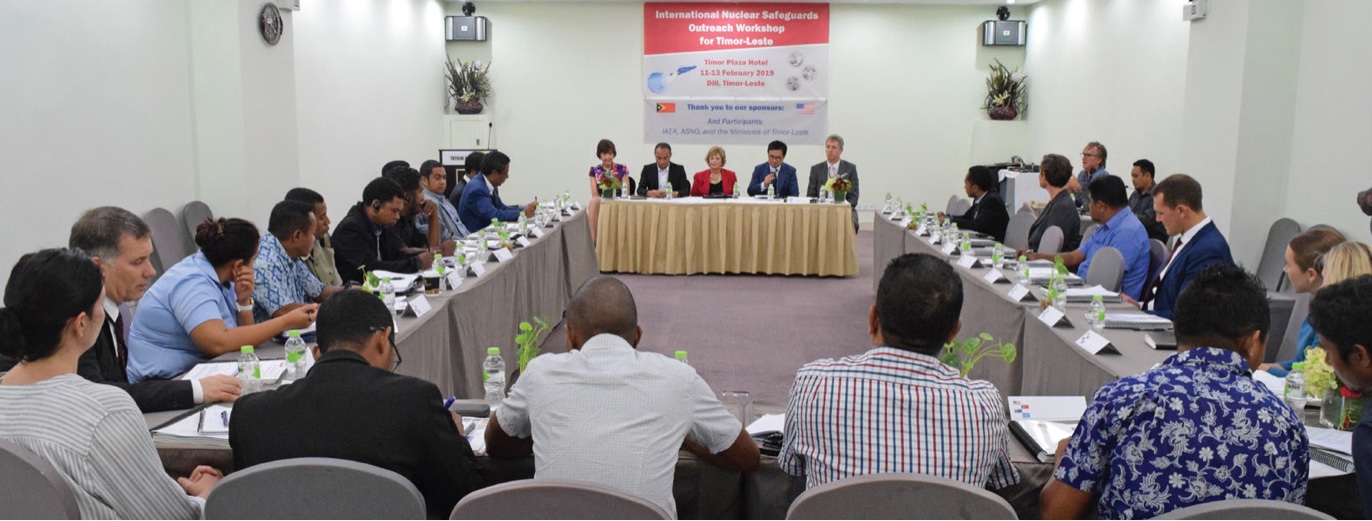
Training course on IAEA safeguards held in Dili, Timor-Leste, February 2019.
Cooperation with other States Parties
ASNO has close and long-standing relationships with nuclear security and safeguards regulatory and policy agencies in several countries both in and outside the region. ASNO actively worked to maintain and strengthen relationships through both high-level and operational-level discussions and through projects under the Asia-Pacific Safeguards Network (APSN).
The 9th annual meeting of APSN was held on 1–2 November 2018 in Vienna, hosted by the Government of Korea and organised by KINAC (Korea Institute of Nuclear Nonproliferation and Control). The meeting was attended by 55 representatives from 13 regional countries including representatives from the IAEA and ESARDA. The venue and dates were selected to co-locate the meeting with the IAEA Safeguards Symposium to enable representatives to attend both the Symposium and the APSN meeting. Holding the APSN meeting in Vienna gave APSN members greater exposure to a diverse range of experts in the IAEA to gain a better understanding of safeguards requirements and methods, and provided the IAEA opportunities to discuss safeguards implementation challenges with many safeguards authorities together. Mr Massimo Aparo, Deputy Director General and Head of the Department of Safeguards, IAEA, set the scene with opening remarks on the importance of regional safeguards networks such as APSN. Cambodia joined the meeting as a member of APSN for the first time.
Australia coordinates the safeguards infrastructure, implementation and awareness-raising working group in APSN. Working Group 1 facilitated an information-sharing session on experiences with managing safeguards for locations outside facilities (LOFs) and the IAEA SSAC Advisory Service missions.
During the last twelve months, assistance, expert advice and training were provided to various other professionals in a range of countries and international organisations. Presentations related to these activities are included in the list in Annex D. In February 2019 ASNO assisted the US Department of Energy's National Nuclear Security Administration (NNSA) and the IAEA in a workshop on IAEA safeguards in Dili, Timor-Leste. This was the first ever workshop on IAEA safeguards for Timor-Leste, designed to inform officials on the basics of safeguards implementation, to assist Timor-Leste in bringing its Comprehensive Safeguards Agreement (CSA) and Additional Protocol (AP) into force. Timor-Leste would only have very small quantities of nuclear material subject to safeguards, possibly used for industrial shielding applications in the oil and gas industry. As such, Timor-Leste would be amongst more than 100 countries that have or qualify for a Small Quantities Protocols to their CSA, which holds in abeyance many safeguards implementation requirements under the CSA.

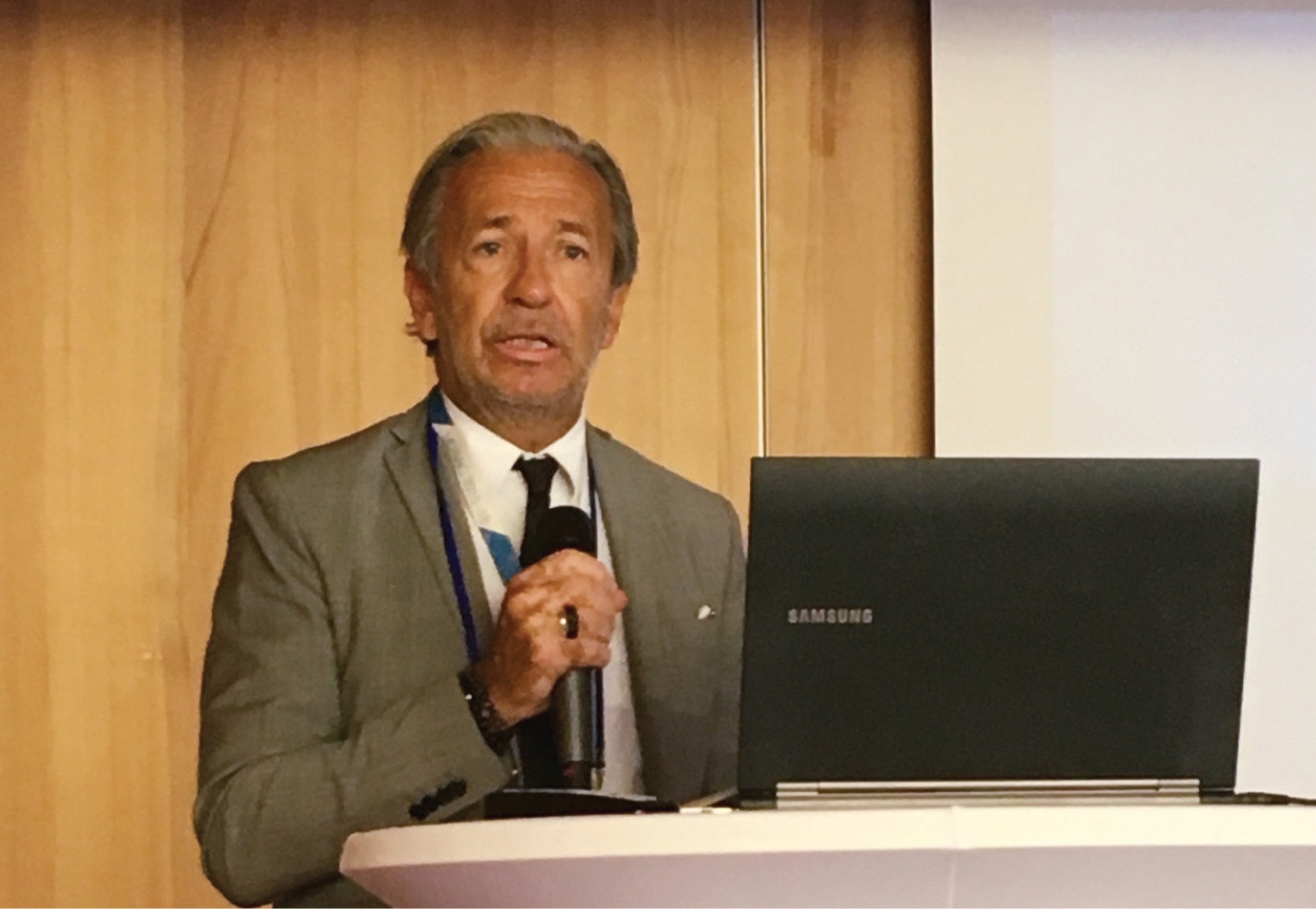
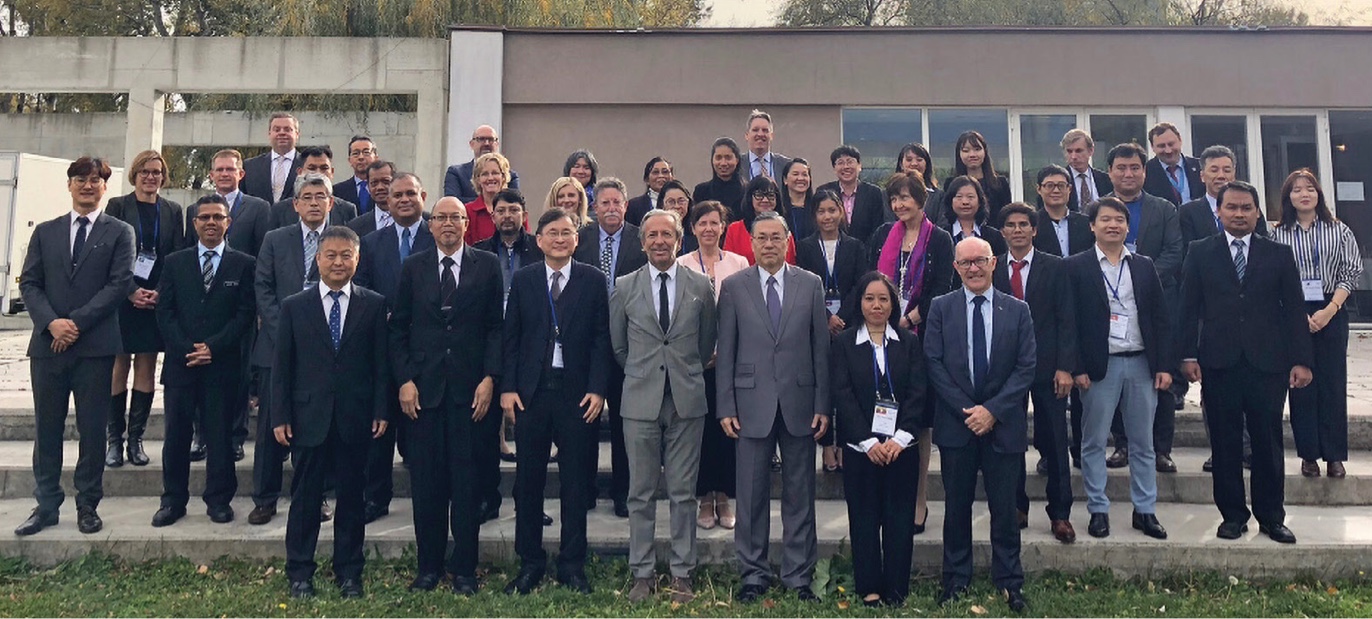
Mr Massimo Aparo, Deputy Director General and Head of the Department of Safeguards, IAEA at the Asia Pacific Safeguards Network (APSN) 9th Annual Meeting 1–2 November 2018, Vienna
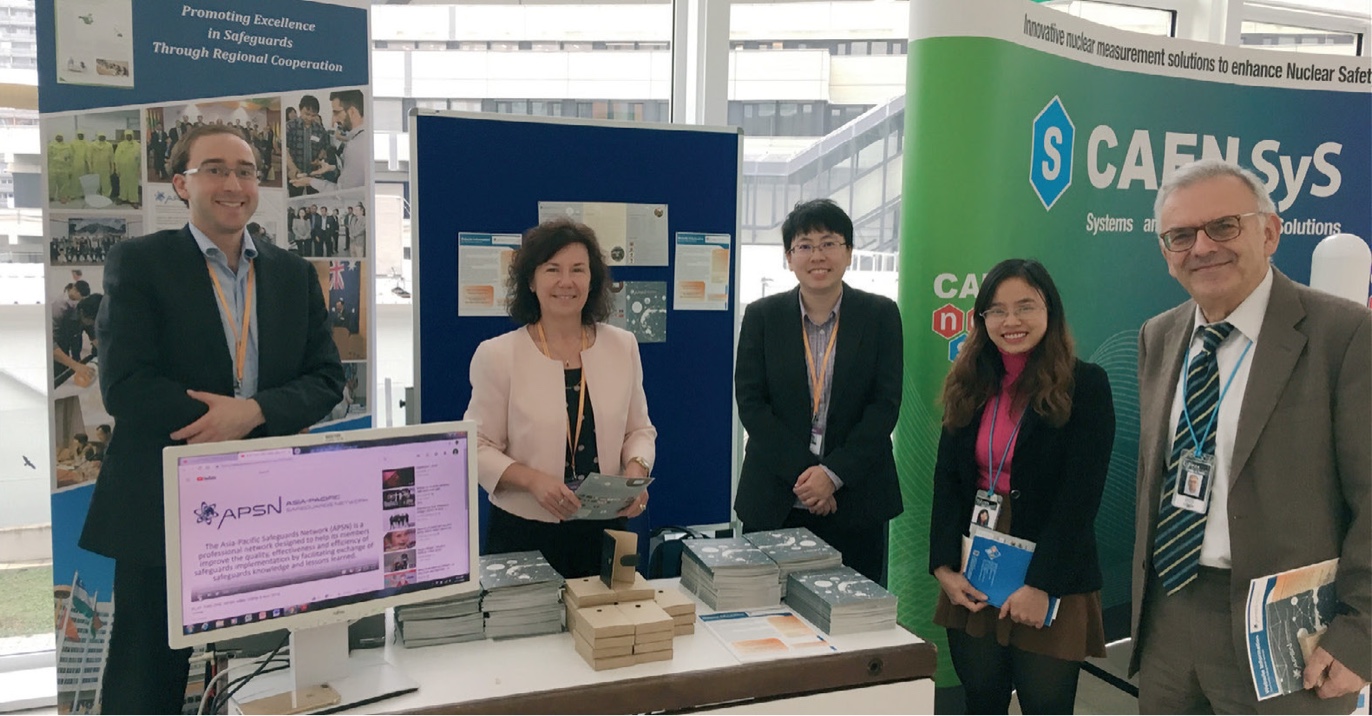
Asia-Pacific Safeguards Network (APSN) exhibit at IAEA Safeguards Symposium 5–9 November 2018, Vienna
IAEA Standing Advisory Group on Safeguards Implementation
DG ASNO chairs the IAEA Director General's Standing Advisory Group on Safeguards Implementation (SAGSI). Dr Floyd's appointment started with the 77th series of SAGSI meetings in 2013. SAGSI provides recommendations to the IAEA Director General on vital safeguards implementation issues. The Group currently comprises 17 international experts from 17 Member States. The members serve on the group in a personal capacity and not as representatives of their government or organisation. Each expert is invited to serve a three-year term, with the possibility of renewal. The Secretariat of SAGSI includes the IAEA Deputy Director General for Safeguards, and the Director, Division of Concepts and Planning.
SAGSI has two series of meetings each year, with each series usually comprising a working group meeting and a plenary meeting. During each series of meetings, SAGSI examines and provides advice on a list of safeguards implementation topics set by the IAEA Director General. One of the core topics examined over 2018–19 was the enhancement of the format and content of annual Safeguards Implementation Reports (SIRs) produced by the IAEA Secretariat. SAGSI discussed improvements to analytics and data visualisation, particularly graphics illustrating multi-year trends. SAGSI also considered options for adding context and analysis to the data in the SIR, particularly to help explain the impact of areas of difficulty in safeguards implementation, such as issues with the completeness, timeliness and accuracy of States' reports.
Other core topics included: opportunities to achieve broader use of safeguards by design among designers and vendors of new nuclear facilities; incorporation of key performance indicators into IAEA management processes and decision making; prioritisation of safeguards technical objectives; outcomes from the 2018 Symposium on International Safeguards; development of statistical methodologies to support state-level safeguards approaches; promotion of wider uptake of activities such as the voluntary reporting scheme; potential safeguards applications of passive gamma emission tomography (PGET) for verification of spent fuel; and updates to the content of the Physical Model, which acts as a technical reference for safeguards implementation by describing each stage of the nuclear fuel cycle.

